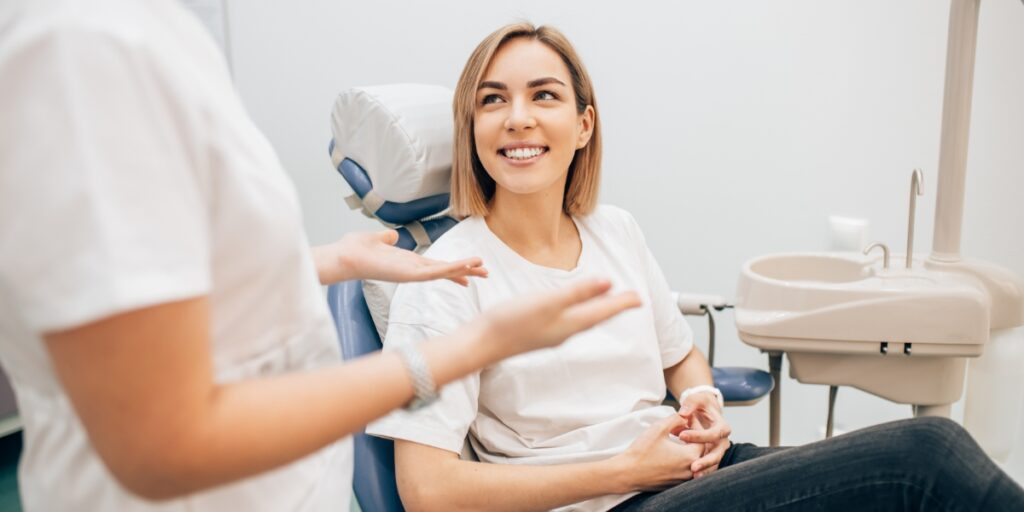The canine teeth are some of the final permanent teeth to come in, emerging at about the age of 11 or 12. After wisdom teeth, they are the most commonly impacted teeth, which means they can sometimes become stuck beneath the gums so that they are not able to grow into the mouth properly. When wisdom teeth become impacted, extraction is often the best treatment, but when canines are impacted, they must be treated in an entirely different way because canines are very important for the bite. Impacted canine teeth will often be treated both orthodontically (by an orthodontist) and surgically (by an oral surgeon) so that they can have the best chance to emerge successfully.
The thing about impacted teeth is that the longer they stay trapped under the gums, the more their roots develop and fuse with the jaw bone. This goes for both canines and wisdom teeth, so it’s very important to treat these teeth as soon as possible. The American Association of Orthodontists recommends that all children should be seen by a dental professional by age 7 for an examination and imaging to find out how the eruption of the adult teeth is going.

What causes canine teeth to become impacted?
While most canine teeth will grow into the dental arch just fine, these important teeth can sometimes become impacted due to
- Baby teeth that have not fallen out in time
- Abnormal growths that block the route of the tooth
- Dental crowding
If it turns out that one or both of your child’s canine teeth has become impacted, your family dentist will recommend further treatment as soon as possible. Time is of the essence because if the canines remain impacted into adulthood, they can become fused with the bone beneath the gums, making it unlikely that treatment will be successful. In such cases, dental implants or other tooth replacement options can be used to replace the canines with very realistic results. The standard treatment for canine impaction is a procedure called exposure and bonding. For this procedure, an oral surgeon will work closely with an orthodontist to allow the canine tooth to erupt into its proper position.
Exposure and Bonding for Impacted Canines
Exposure and bonding is a very effective treatment for impacted canines. First, an orthodontist will use braces to make space in the dental arch for the impacted tooth to emerge. When this space is ready, the orthodontist will send the patient to an oral surgeon who will surgically expose the tooth by making an incision in the gum and/or bone that is blocking the tooth, and then install a small orthodontic appliance to the tooth (a bracket). He will then attach a chain to the tooth using this bracket. Next, the patient will go back to the orthodontist, who will use the bracket and chain to guide the impacted canine tooth gently, over time, into its proper location, where it will take on its job as an essential part of the patient’s smile and oral function for years to come.
Impacted Tooth Exposure in Grand Rapids, MI
Dr. Jesin provides oral surgery services to patients of all ages, including young children and teens. They have many years of experience successfully treating impacted canine teeth. If your child requires treatment for impacted canines, the doctor will meet with you and your child to create a personalized treatment plan that offers your child the most comfortable experience possible. Your child will be in excellent hands every step of the way at Advanced Oral Surgery & Dental Implant Studio — we treat our patients like family and know how to make sure children feel calm and comfortable during oral surgery procedures. Please call us to schedule a consultation or to ask any questions you have about treatment for impacted canines or any of other services we provide at our practice. Thank you for the opportunity to care for you and your family.


